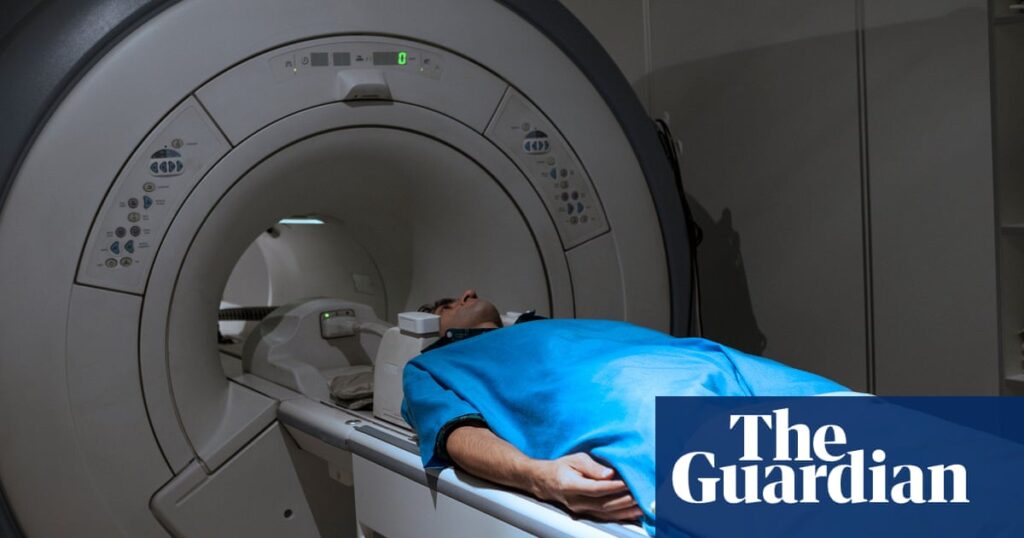More than 15 million people in the US, UK, Germany and France do not know they have the most aggressive form of fatty liver disease, according to research.
Metabolic dysfunction-associated steatotic liver disease (MASLD) – the formal name for non-alcoholic fatty liver disease – occurs in people who drink no or minimal amounts of alcohol whose liver contains more than 5% fat.
About two-thirds of patients with type 2 diabetes are thought to have the condition, which is also associated with obesity, heart and circulatory disease.
Approximately 5% of adults globally have the most aggressive form of MASLD. Metabolic dysfunction-associated steatohepatitis (MASH) causes fibrosis (scarring) and can lead to cirrhosis and is linked to greater risk of cardiovascular disease, chronic kidney disease and liver cancer.
But the vast majority of people do not know they have the condition. An international group of researchers examined prevalence and diagnosis of aggressive fatty liver disease in the US, UK, Germany and France.
The researchers found that just under 3% of people in the UK, France and Germany, and 4% of those in the US have MASH, but diagnosis rates were below 18%. That means about 20 million people in the US, UK, Germany and France are living with MASH but only 2.5 million people have a diagnosis, leaving more than three-quarters – about 16.7 million people – unaware they have the condition.
The report, published in the Lancet Regional Health Europe and presented at the meeting of the global thinktank on steatotic liver disease in Barcelona, Spain, on Thursday, calls for a doubling in diagnosis rates from 2022 levels. Traditionally, MASH was diagnosed through biopsy, but now non-invasive methods such as blood tests, ultrasound and MRI scans can be used. As a result, everyone with type 2 diabetes; obesity combined with one or more other risk factors; and those with persistently high liver enzymes should be screened for MASH, the researchers conclude.
Dr Jeffrey Lazarus, the lead author of the paper and a professor of global health in New York and Barcelona, said: “Undiagnosed MASH costs economies billions of pounds in lost productivity and poor health. Unless diagnosis rates are doubled, alongside similar increases in treatment and care, direct health costs alone are predicted to triple over the next 20 years.”
Responding to the findings, Emmanouil Tsochatzis, a professor of hepatology at University College London and a consultant hepatologist at the Royal Free hospital, said: “More than 15 million people across the US and Europe have the deadliest form of fatty liver disease – and don’t know it. Without faster diagnosis and access to treatment, the human and economic toll will skyrocket.”
The research has also prompted renewed calls for weight loss jabs to be used to treat MASH.
Dr Paul Brennan, a co-author of the Lancet paper and a hepatologist at NHS Tayside, said: “GLP-1s (including Wegovy and Mounjaro) offer the potential to resynchronise our metabolism, by introducing feelings of satiety – fullness – and delaying the time the stomach takes to empty. These effects often result in reduced calorie intake, and improvements in how the liver handles nutrients as a result of weight loss, thus reducing scar tissue formation in the liver.”
Michael Betel, the president of the Fatty Liver Alliance, said: “Too many people living with type 2 diabetes or obesity are never tested for MASH until it’s too late. We need a huge increase in liver health assessments in patients living with these diseases, alongside lifestyle changes and for some, when appropriate, weight loss drugs to reduce blood sugar and appetite. While weight loss drugs weren’t created to treat liver disease, trials suggest they could benefit multiple metabolic-related conditions, and improve our liver health.”
Separately a study published on Wednesday found that the diabetes drug dapagliflozin, which reduces blood sugar levels, can also reduce fat levels and fibrosis in the liver.

